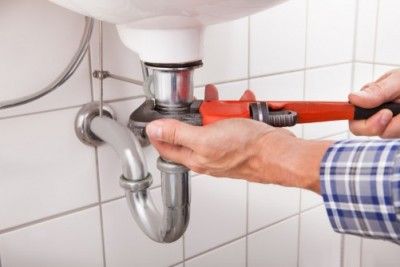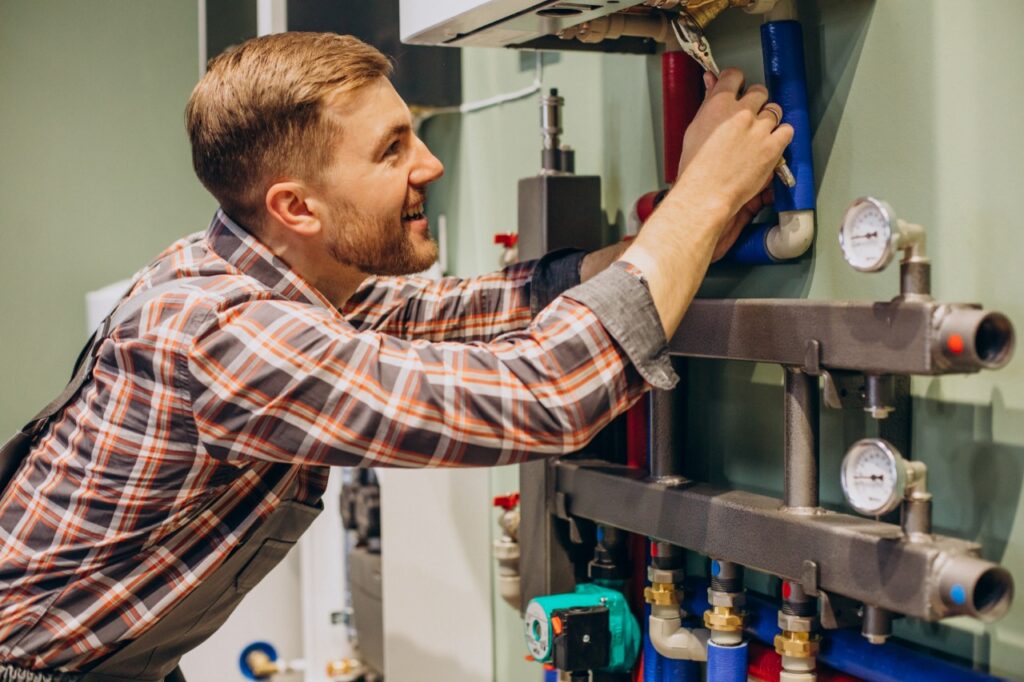Exploring The Structure of Your Home's Plumbing System
Exploring The Structure of Your Home's Plumbing System
Blog Article
How do you actually feel about The Inner Workings of Your Home's Plumbing?

Comprehending how your home's plumbing system functions is important for each home owner. From providing tidy water for drinking, cooking, and bathing to safely eliminating wastewater, a properly maintained pipes system is crucial for your family's health and wellness and comfort. In this detailed overview, we'll discover the intricate network that comprises your home's pipes and deal pointers on maintenance, upgrades, and taking care of usual issues.
Intro
Your home's plumbing system is greater than just a network of pipes; it's a complicated system that guarantees you have accessibility to tidy water and reliable wastewater removal. Knowing its components and exactly how they collaborate can aid you protect against pricey repairs and make certain every little thing runs efficiently.
Standard Elements of a Pipes System
Pipes and Tubes
At the heart of your plumbing system are the pipelines and tubes that lug water throughout your home. These can be made of various materials such as copper, PVC, or PEX, each with its advantages in terms of sturdiness and cost-effectiveness.
Components: Sinks, Toilets, Showers, and so on.
Components like sinks, bathrooms, showers, and tubs are where water is utilized in your house. Recognizing just how these fixtures link to the plumbing system assists in diagnosing problems and intending upgrades.
Shutoffs and Shut-off Factors
Shutoffs manage the circulation of water in your pipes system. Shut-off shutoffs are essential throughout emergency situations or when you require to make fixings, permitting you to separate parts of the system without interfering with water circulation to the whole home.
Water System System
Main Water Line
The main water line connects your home to the municipal water or a personal well. It's where water enters your home and is distributed to numerous fixtures.
Water Meter and Pressure Regulatory Authority
The water meter steps your water usage, while a pressure regulator makes certain that water flows at a secure stress throughout your home's pipes system, stopping damage to pipelines and components.
Cold Water vs. Hot Water Lines
Understanding the difference in between cold water lines, which provide water straight from the primary, and hot water lines, which carry warmed water from the hot water heater, helps in repairing and planning for upgrades.
Drainage System
Drain Pipes Pipes and Traps
Drain pipelines bring wastewater away from sinks, showers, and commodes to the drain or septic tank. Catches stop sewage system gases from entering your home and likewise trap debris that can trigger clogs.
Ventilation Pipes
Air flow pipes permit air into the drainage system, protecting against suction that might slow drain and cause catches to vacant. Appropriate ventilation is crucial for preserving the honesty of your pipes system.
Value of Correct Drain
Ensuring appropriate water drainage avoids back-ups and water damage. Consistently cleaning up drains and maintaining traps can prevent expensive repairs and expand the life of your plumbing system.
Water Heater
Sorts Of Hot Water Heater
Water heaters can be tankless or typical tank-style. Tankless heaters warm water as needed, while tanks keep warmed water for immediate usage.
Upgrading Your Plumbing System
Reasons for Upgrading
Updating to water-efficient components or replacing old pipelines can improve water high quality, lower water bills, and boost the worth of your home.
Modern Pipes Technologies and Their Benefits
Explore innovations like wise leakage detectors, water-saving commodes, and energy-efficient water heaters that can save money and lower ecological impact.
Expense Considerations and ROI
Determine the upfront prices versus long-term cost savings when taking into consideration plumbing upgrades. Numerous upgrades spend for themselves via reduced energy bills and fewer repair work.
Just How Water Heaters Connect to the Plumbing System
Comprehending just how water heaters connect to both the cold water supply and hot water circulation lines aids in diagnosing problems like inadequate hot water or leaks.
Maintenance Tips for Water Heaters
Frequently flushing your hot water heater to get rid of debris, inspecting the temperature level settings, and inspecting for leakages can extend its lifespan and improve energy effectiveness.
Typical Plumbing Problems
Leakages and Their Reasons
Leakages can happen because of maturing pipes, loose fittings, or high water stress. Addressing leakages promptly prevents water damages and mold development.
Blockages and Clogs
Obstructions in drains pipes and toilets are frequently triggered by flushing non-flushable products or a buildup of grease and hair. Using drain screens and being mindful of what drops your drains pipes can protect against clogs.
Signs of Pipes Issues to Watch For
Low water pressure, slow-moving drains, foul odors, or uncommonly high water expenses are signs of potential plumbing problems that need to be attended to quickly.
Plumbing Upkeep Tips
Normal Assessments and Checks
Schedule annual pipes examinations to capture problems early. Seek indicators of leakages, rust, or mineral accumulation in faucets and showerheads.
DIY Upkeep Tasks
Easy tasks like cleansing tap aerators, looking for bathroom leaks using color tablet computers, or protecting subjected pipes in cold climates can stop major plumbing problems.
When to Call an Expert Plumbing
Know when a plumbing issue calls for specialist know-how. Attempting complex repairs without correct understanding can bring about even more damage and higher repair prices.
Tips for Decreasing Water Usage
Straightforward routines like repairing leakages quickly, taking shorter showers, and running complete loads of washing and dishes can preserve water and lower your energy bills.
Eco-Friendly Pipes Options
Consider sustainable pipes products like bamboo for floor covering, which is durable and environment-friendly, or recycled glass for countertops.
Emergency situation Preparedness
Actions to Take During a Plumbing Emergency situation
Know where your shut-off valves are located and just how to shut off the water supply in case of a burst pipeline or significant leak.
Relevance of Having Emergency Calls Convenient
Keep get in touch with information for neighborhood plumbing technicians or emergency services easily available for fast response throughout a pipes dilemma.
Ecological Impact and Preservation
Water-Saving Components and Appliances
Mounting low-flow faucets, showerheads, and toilets can dramatically reduce water use without sacrificing efficiency.
DIY Emergency Situation Fixes (When Appropriate).
Short-lived fixes like making use of duct tape to spot a dripping pipe or putting a bucket under a trickling tap can lessen damage up until a professional plumbing gets here.
Final thought.
Understanding the composition of your home's pipes system empowers you to preserve it properly, conserving money and time on fixings. By following regular upkeep routines and staying notified about contemporary pipes modern technologies, you can ensure your pipes system runs efficiently for many years ahead.
Exploring Your Homes Plumbing Anatomy
Water Supply System
Main Water Line: This is where water enters your home from the municipal supply or a private well. Water Meter: Typically located near where the main water line enters the property, it measures the amount of water used. Shutoff Valve: It s crucial to know where this is in case of emergencies. It allows you to turn off the water supply to the entire house. Pipes and Fittings: These distribute water throughout your home. Materials can include copper, PVC, or PEX. Drain-Waste-Vent (DWV) System
Drains: Located in sinks, showers, and tubs, these carry wastewater away. Traps: U-shaped pipes under sinks that hold standing water, blocking sewer gases from entering the home. Vents: Pipes that lead from the DWV system to the outside, preventing vacuum formation and allowing gases to escape. Sewer Line: Carries all wastewater from the home to the municipal sewer system or a septic tank. Fixtures and Appliances
Sinks, Toilets, and Showers Dishwashers and Washing Machines Water Heaters Maintenance Tips
Regularly check for leaks in exposed pipes and around fixtures. Inspect the water heater annually for signs of wear. Clean drains and traps to prevent clogs and odors. Know how to shut off water to individual fixtures. When to Call a Professional
Major leaks or burst pipes Installation of new pipes or fixtures Septic tank issues Remodeling projects that involve plumbing changes Conclusion
Understanding the anatomy of your home's plumbing is key to maintaining a functional and efficient system. Regular checks and knowing when to call in the experts can save you time, money, and stress.
https://www.mavyn.com/blog/exploring-your-homes-plumbing-anatomy

I recently found that blog post on Understanding Your Home's Plumbing Anatomy when scouting around the search engines. Enjoyed reading our write-up? Please quickly share it. Help someone else discover it. I truly appreciate reading our article about Exploring Your Homes Plumbing Anatomy.
Get Quote Now Report this page